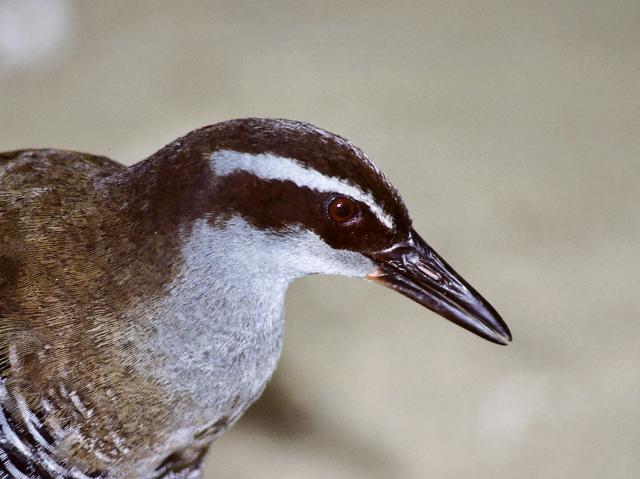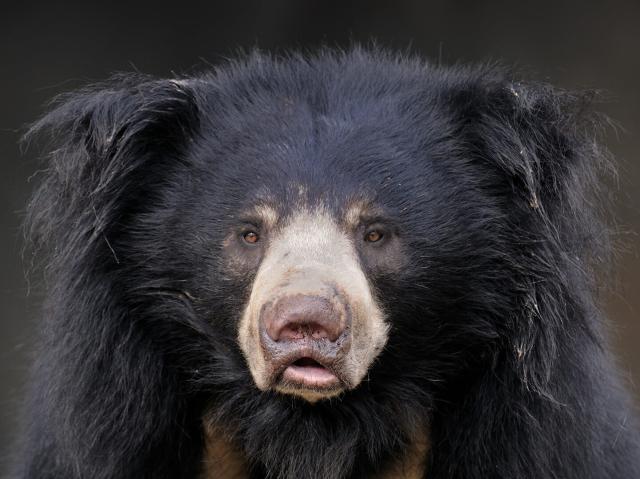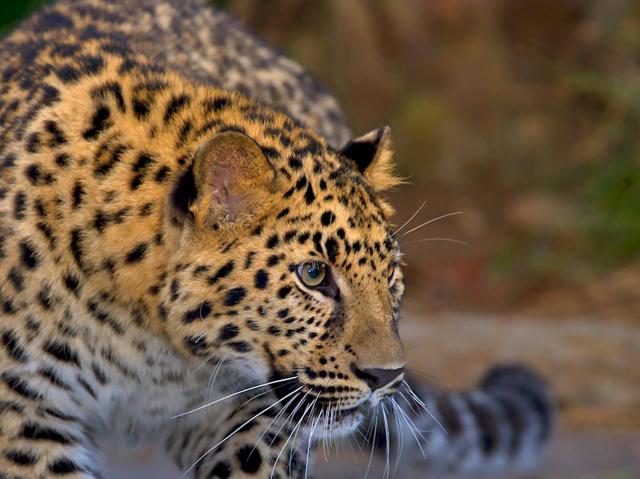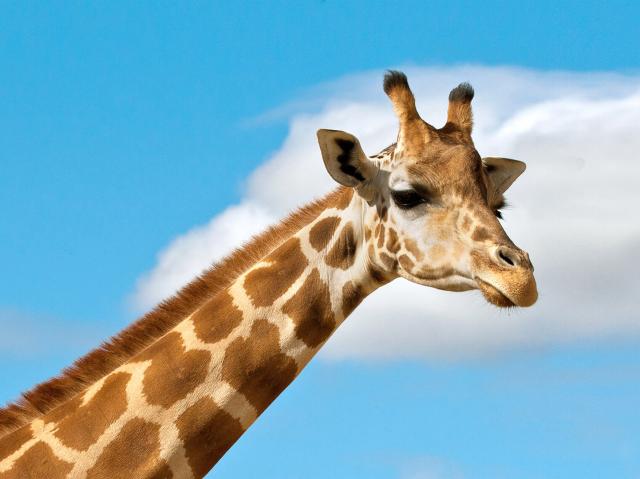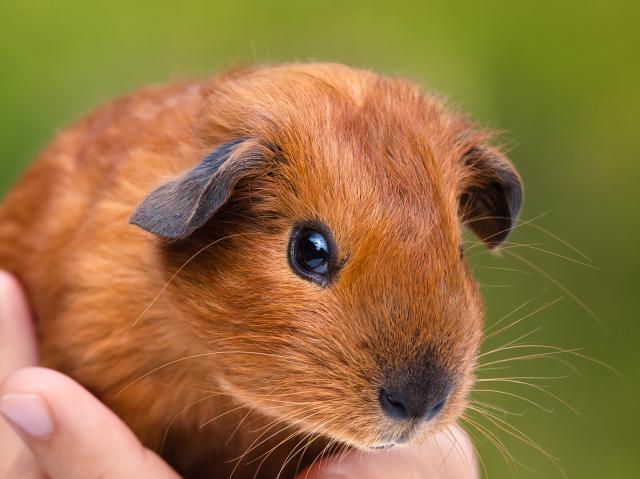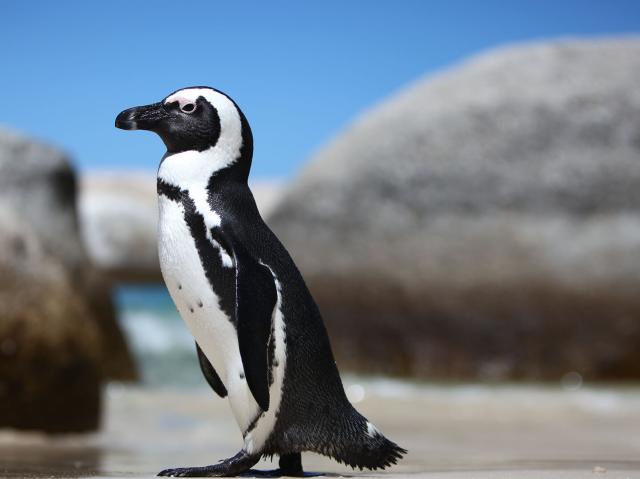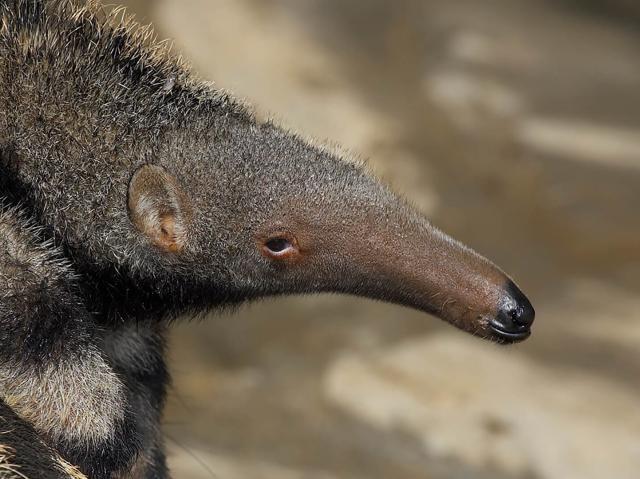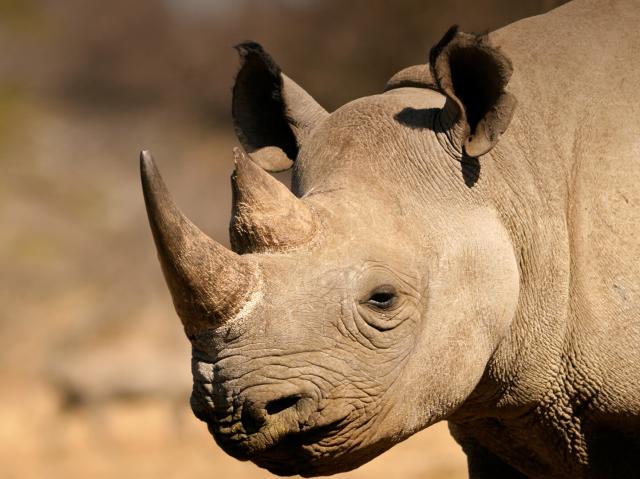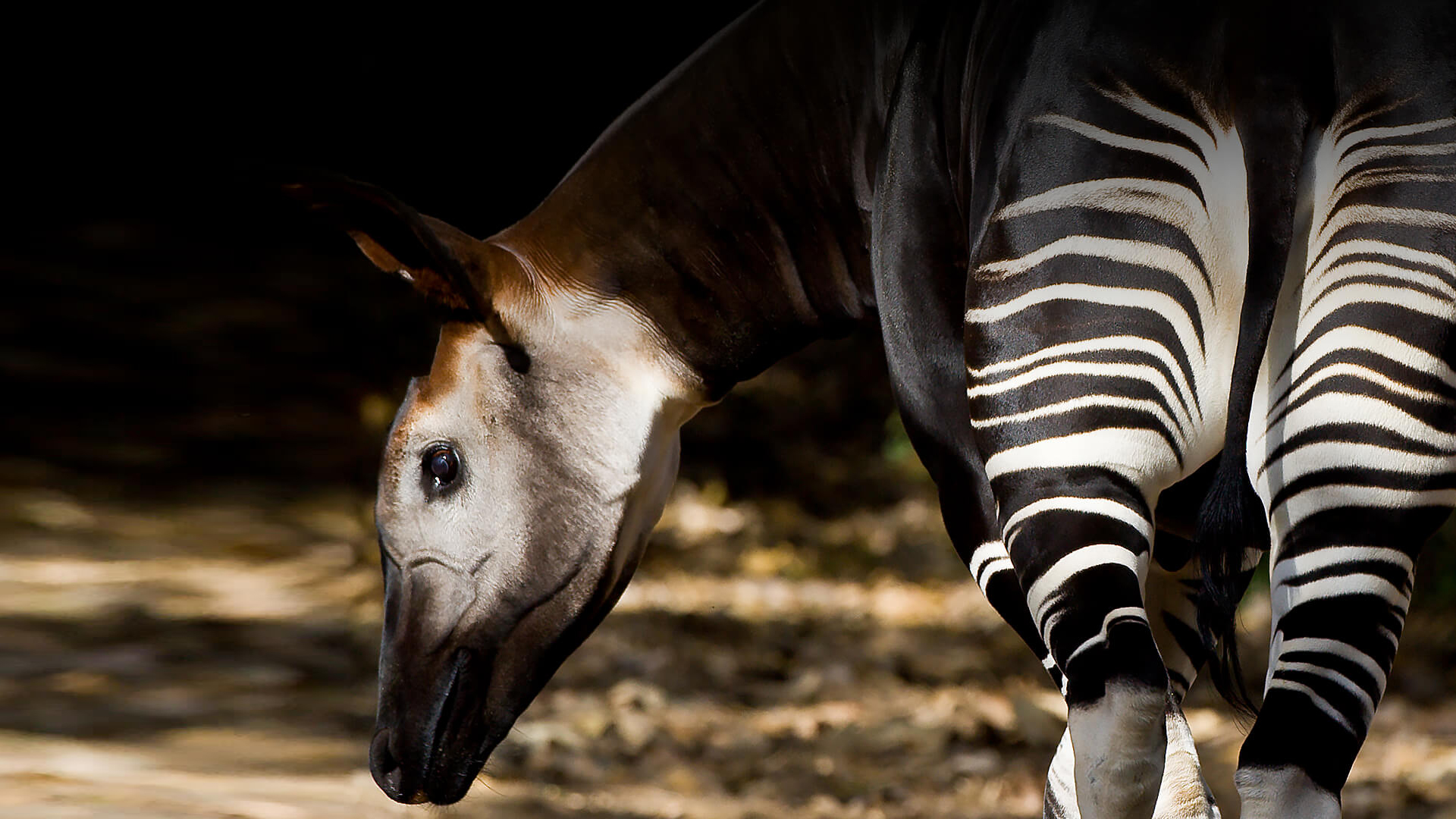
Okapi

- CLASS: Mammalia (Mammals)
- ORDER: Artiodactyla
- FAMILY: Giraffidae
- GENUS: Okapia
- SPECIES: johnstoni

ABOUT
With striking white-and-black striped legs, an okapi (pronounced oh-KAHP-ee) looks like it could be related to a zebra. But if you look at an okapi’s head, you’ll also notice a resemblance to a giraffe.
Like a giraffe, an okapi has very large, upright ears, which catch even slight sounds. Males have two bony protrusions, called ossicones, near their ears, like giraffes do. An okapi also has a long, dark, prehensile tongue, like a giraffe’s, to help it strip the buds and young leaves from the understory brush of its rainforest home. Okapis are indeed the only close living relative of giraffes.
If okapis are related to giraffes, why aren’t they as tall as giraffes? Okapis live in rainforests, where they must dodge obstacles like dangling tree branches, trunks, and roots. Okapis have shorter legs and necks to help them navigate their forest habitat.
An okapi’s stripes, which may seem very bold to us, offer great camouflage when an okapi stands in the partial sunlight filtering through the dense rainforest. Their stripes may also help a young okapi follow their mother through the dark forest, and they may help adults find each other, too. An okapi’s dark brown or reddish-brown coat is dense and feels like velvet. It’s also oily, so water slides right off, keeping okapis dry on rainy days.
HABITAT AND DIET
Okapis live in tropical rainforests in the northeast region of the Democratic Republic of the Congo (formerly Zaire), in Central Africa. It can prove incredibly difficult to find them in dense rainforests, though. Okapis are very wary, and their highly developed hearing alerts them to run when they hear people in the distance. In fact, while indigenous people of the Ituri Forest knew of okapis for generations, scientists did not know of okapis until 1901. Today’s conservation scientists continue to find it challenging to estimate their population size, but it’s clear that they’re in steep decline as a result of habitat loss and poaching.
Okapis often travel 0.5 miles (0.8 kilometers) a day or more in search of food, usually along trails worn down by generations of okapis. Adult males have large home ranges that can span six miles (10 kilometers), and they can travel up to 2.5 miles (4 kilometers) a day. Okapis are naturally solitary except for adult females caring for calves. Males try to keep other males out of their territories but allow females to travel through in search of food.
Both male and female okapis are most active during the afternoon through the evening. They are important forest browsers, eating 40 to 65 pounds (18 to 29 kilograms) of leaves, twigs, fruits, and fungi each day and leaving a “pruning line” in the foliage. They also eat clay, likely for the minerals it contains. Okapis use their dark blue or black prehensile tongue to pull leaves from trees and into their mouth. As ruminants, they chew their cud, just like giraffes, sheep, and goats do, utilizing a multi-chambered stomach to fully digest plants.
FAMILY LIFE
While okapis travel for the most part by themselves within their home ranges, they still have ways of communicating with others whose ranges overlap. A scent gland on each foot leaves behind a sticky, tar-like substance wherever they walk, marking their territory. Because they have a great sense of smell, an okapi can tell if another okapi has been there by sniffing out these scent marks left on the ground. Males also mark their territory by spraying urine. Normally silent, female okapis may vocalize when they are ready to breed.
Okapi newborns can stand up within 30 minutes of birth and nurse for the first time within an hour of birth. They have the same coloring as an adult but have a short fringe of hair along their spine, which generally disappears by the time they are 12 to 14 months old. Mothers hide their newborn calves in a safe, secluded spot, returning regularly to allow the calf to nurse. This helps keep predators from finding a hidden newborn until it has had a chance to grow and gain strength. An okapi calf starts trying solid food at just three weeks old. Calves triple their size by the end of their second month but do not reach full adult size until three years of age.
Okapis are very shy. Their reddish brown-black coat camouflages them in the deep forest. In the thick trees and underbrush, okapis rely on their hearing to warn them of danger. Their huge ears pick up even the softest sounds coming from any direction. They listen for leopards, which hunt adult okapis, as well as smaller wild cats, which can attack a young calf.
San Diego Zoo Wildlife Alliance conservation scientists discovered that okapis have a secret language. They watched okapis closely and recorded their sounds. They heard coughs, bleats, and whistles quite often, but it wasn’t until they returned to the Sensory Ecology Lab to examine their recordings closely that they realized okapis also use other calls with very low frequencies. These calls are so low, in fact, that we cannot hear them at all! It’s only when we look at recordings via specialized computer software that these infrasonic mutterings become visible.
Our conservation scientists then recorded okapi vocalizations around the clock to find out why they use these low-pitched calls. One explanation is that these calls have evolved for communication between a mother and her baby while she’s out foraging. In this situation, a mother can “check in” with her offspring without alerting potential predators to the fact that her baby is vulnerable. Predators remain unaware of these chats, as, like us, they cannot hear sounds so low in pitch.
CONSERVATION
The changing politics of Central Africa, poaching, and habitat loss have led to severe population decline. Scientists estimate the rate of decline has exceeded 50% over three generations, and continues to intensify. Fortunately, in 1992, one-fifth of okapi habitat in Africa’s Ituri Forest was set aside as a wildlife reserve. The Okapi Wildlife Reserve, with support from San Diego Zoo Wildlife Alliance, other zoos and conservation organizations, and the local community, continues to protect and to support study of this rare forest species. As an “umbrella species" in conservation efforts, protecting okapis also helps protect other wildlife that share their rainforest habitats.
By joining San Diego Zoo Wildlife Alliance as an ally for wildlife, you help save species worldwide.
LIFE SPAN
17 years on average
YOUNG
Gestation: 14 to 16 months
Number of young at birth: Usually 1
Size at birth: About 2.6 feet (80 centimeters) tall and 30-66 pounds (14-30 kilograms)
SIZE
Height: About 5 feet (1.5 metes) tall
Weight: Females 495 to 770 pounds (225 to 350 kilograms); males 440 to 660 pounds (200 to 300 kilograms)
FUN FACTS
An okapi's ears can rotate independently, so they can listen for sounds both in front and behind.
An okapi's dark tongue is long enough to reach its eyes and ears.
Okapi stripes are sometimes called "follow me" stripes, as the bold pattern makes it easy for a calf to follow its mother through the dark rainforest.
Like giraffes, okapis must splay their legs to reach the ground when drinking.
An Okapi calf can delay their first defecation for a month or two after birth. Scientists believe they do this to avoid signaling their location to potential predators, especially when their mother leaves to forage for food.



